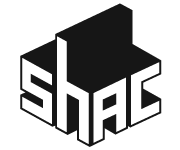So, you know you want a sustainable (healthy, efficient, affordable and desirable) home, but where do you start? I’ve covered the fundamentals of what makes a good energy efficient home, but these are details. What’s the big picture? Where do you start a sustainable house?
Why…what?
Before getting too specific about your plan, here are some questions I recommend being able to answer:
- Why are you renovating/building/remodelling/looking for a new home?
- What are you most dissatisfied with at the moment?
- How many people are you building for?
- How much time are all these people actually going to spend in your home each day, each week, each month…?
- What do you want your weekends to look like?
- Describe your ‘perfect day’. Who are you with? Where are you? What are you doing?
- Does you perfect day involve any of the following:
- Mowing the lawn
- Fixing a fence
- Painting a fence
- Cleaning windows
- Cleaning a pool
- Walking a dog
- Vacuuming
- Cleaning three bathrooms
- Painting the house
- Cleaning the house
- Going on adventures with your family
- Oiling a deck
- Blowing/sweeping leaves
- Gardening
- Relaxing by the pool
- Working a second job
- Being at the beach
- Harvesting vegetables and fruit from your own garden
- Watching someone else do any of the above
What’s all this got to do with the location and layout of your dream home? A lot. Creating a better, sustainable place to live is about lifestyle. This is where you need to start.
When Natalie and I moved to Auckland our criteria for a place to live included:
- Walking distance to a primary school with a good reputation
- Walking distance to a train station and a train commute of 30 minutes or less
- At least three bedrooms, ideally four (Xavier, our third child had just been born, and we wanted to the option of a home office)
Money
The next big question is about budget. There are two big questions here:
- How much do you want to pay each month to own and operate a healthy, safe home?
- How much money do have to design, consent, building and finish your project?
They’re both related. The more you borrow, the more your monthly expenses are going to be. The more you invest on good design, insulation and solar power, the less your monthly running costs are going to be.
As painful, boring or frustrating as it might be, it’s worth spending some time here. Most of the designers I speak to say that a client’s true budget is one of the hardest things to pin down. Knowing exactly how much money you’re wanting to spend and being honest about this upfront will save time money and disappointment by avoiding uneasy scope changes when you do start talking to a designer.
Read more at the excellent “Where do you start a sustainable house?.”
